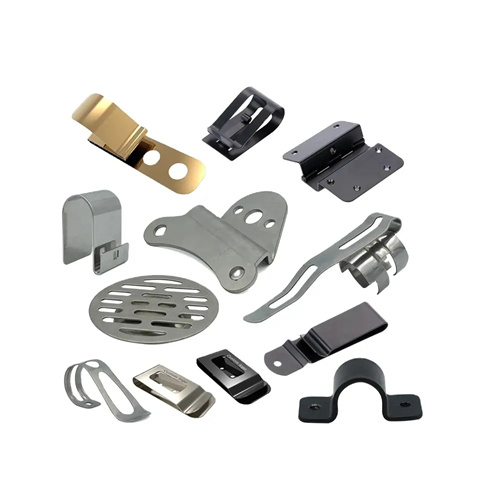Blanking die limit device
The position limiter in a punching die is a key component that controls the positional accuracy of the die’s moving parts. Its primary function is to limit the travel of components such as the punch, stripper plate, and ejector, preventing damage to the die or quality defects in the punched parts due to overtravel. The design of the position limiter must be tailored to the die’s structural type, the stamping process requirements, and the required part precision. This ensures the die maintains a stable operating state throughout each stamping cycle. Whether it’s a simple punching die or a complex progressive die, a position limiter is essential, effectively reducing the die’s failure rate and extending its service life.

There are various types of limiting devices for blanking dies, the most common of which are block limits, bolt limits, pin limits, and spring limits. Different types of limiting devices are suitable for different mold structures and working scenarios. Block limits directly limit the maximum stroke of the moving parts by setting a rigid block on the fixed part of the mold. It is suitable for occasions with high requirements for limiting accuracy and high impact force, such as the stripper plate limit of thick sheet blanking dies; bolt limits control the stroke by adjusting the extended length of the limit bolts. It has the characteristics of easy adjustment and is suitable for molds that need to adjust the stroke frequently, such as the punch limit of precision blanking dies; pin limits use the pins installed on the moving parts to cooperate with the pin holes on the fixed parts, which can both limit and assist in guiding, and are suitable for small and medium-sized molds; spring limits limit the position of the moving parts through the elastic force of the spring, and have a certain buffering effect. It is suitable for light loads and high-frequency stamping occasions, such as the ejector limit of thin sheet blanking dies.

The design parameters of the limit device need to be determined based on the working stroke of the mold and the accuracy of the parts, mainly including the limit height, limit accuracy and load capacity. The limit height refers to the distance when the moving parts are restricted to the most reasonable position. For the stripper plate limit, its height should ensure that the gap between the stripper plate and the upper plane of the die is slightly larger than the thickness of the sheet metal, generally 1.1-1.2 times the thickness of the sheet metal, so that it can be unloaded smoothly without crushing the workpiece; for the punch limit, its height should ensure that the punch enters the die to a reasonable depth, usually 0.5-1mm, to avoid excessive entry and increased edge wear. The limit accuracy directly affects the dimensional consistency of the blanking parts and should generally be controlled within the range of ±0.01-±0.03mm. High-precision blanking dies even have higher requirements. The load capacity needs to be calculated based on the impact force during the stamping process to ensure that the limit device will not be deformed or damaged during long-term use.

In continuous and compound dies, the design of the limit device is more complex, and it is usually necessary to set up multiple limit mechanisms to control the movement of different stations or different components respectively. For example, in a multi-station continuous die, in addition to the punch limit at each station, a feed limit device is also required to control the feed distance accuracy of the sheet metal; in a blanking and punching compound die, the punch limit, the stripper plate limit and the ejector limit must be set at the same time to ensure that all actions are coordinated. Multiple limit devices must maintain a linkage relationship, and through accurate dimensional chain calculations, ensure that the limit parameters match each other to avoid interference or limit failure. In addition, the limit device in the continuous die must also consider the coordination with the feeding mechanism and positioning device to form a complete precision control system.

The material selection and processing accuracy of the limit device have a significant impact on its performance. Since the limit device is often subjected to impact loads and friction, the material needs to have high strength and wear resistance. It is usually made of 45 steel, T8A and other steels. The key parts are quenched to a hardness of HRC50-55 to increase the service life. The machining accuracy of the limit surface must be strictly controlled, the surface roughness must be controlled below Ra1.6μm, and the flatness error must not exceed 0.01mm/100mm to ensure uniform contact during limit and avoid excessive local stress. For adjustable limit devices, such as limit bolts, the thread accuracy must reach level 6 or above, and the fit clearance must be controlled at 0.01-0.02mm to ensure the accuracy and stability of the adjustment. By rationally designing and manufacturing the limiting device, the working accuracy and reliability of the blanking die can be significantly improved.
